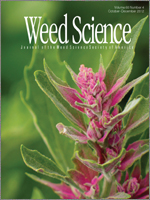Gene flow is an important consideration in the adoption of crops with novel traits or transgenes when sexually compatible relatives occur in the landscape. Unfortunately, gene flow and its long-term environmental impacts are very difficult to predict without releasing and studying the novel genotype. This project uses a retrospective population genetics approach to characterize the relationship between cultivated creeping bentgrass (CB) on a golf course and the same species in five feral populations nearby. CB plants were collected from an 8-yr-old golf course, five weedy populations up to 1,020 m from the golf course, and four modern CB cultivars. Using microsatellite markers and Bayesian inference, two major genetic clusters were distinguished: (1) CB cultivars and individuals from the golf course (cultivar genotype), and (2) the majority of individuals (62%) from the five feral populations (feral genotype). Two feral CB individuals (3.3% of all feral plants) were partially assigned to the cultivar genotype. Principal coordinates analysis agreed with this assignment, suggesting that an intraspecific hybridization event may have occurred. Plants in four feral populations showed a high degree of genetic similarity, but one feral population (Reservoir) was heterogeneous indicating that genetically complex CB populations can develop in cultural landscapes. While recognizing the limitations inherent in a single study of CB population genetics, these results add to the relevant knowledge for predictive ecological risk assessment.
Nomenclature: Creeping bentgrass, Agrostis stolonifera L.





